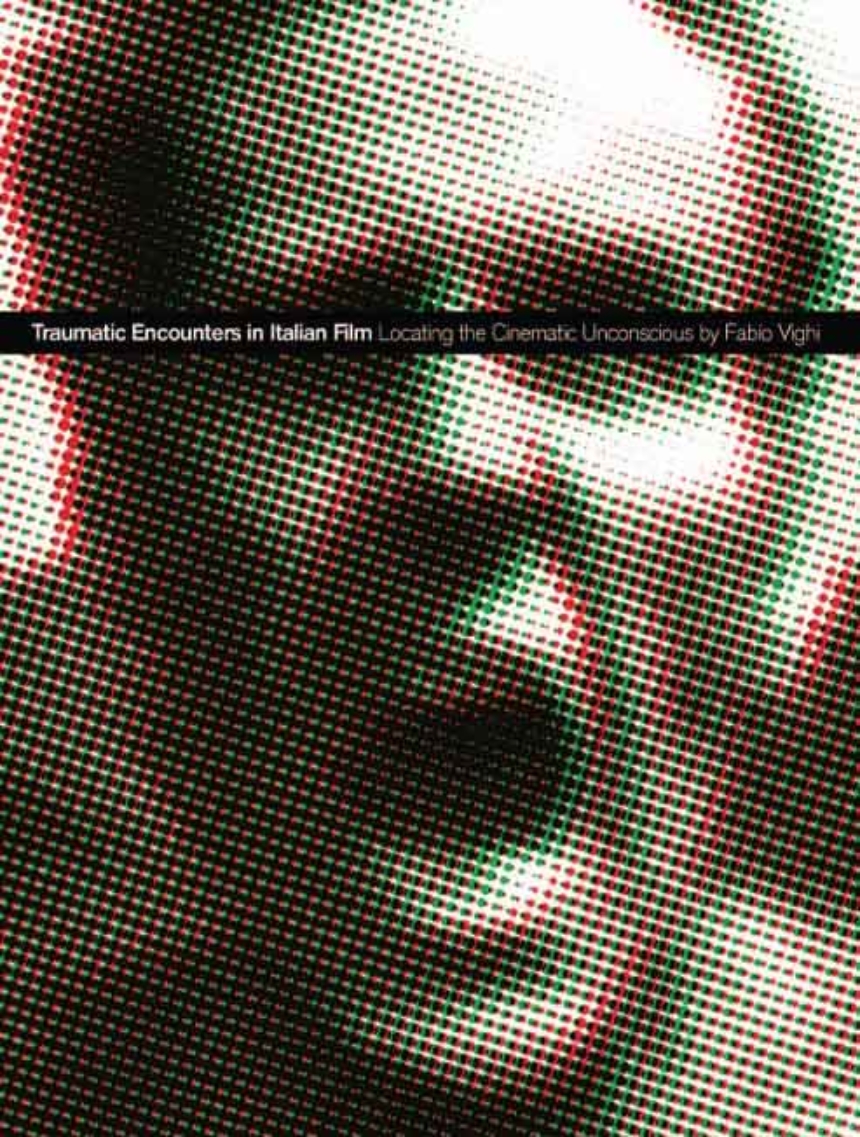Distributed for Intellect Ltd
Traumatic Encounters in Italian Film
Locating the Cinematic Unconscious
’Traumatic Encounters’ addresses the question of the relationship between psychoanalysis and film in a thoroughly original way, bringing together Lacanian theory and Italian cinema as a means to unravel the deepest kernel of repressed knowledge around which film narratives are constructed. The primary theoretical reference of the book is the Real, the most under-represented of the three Lacanian categories (Symbolic, Imaginary and Real), which designates the traumatic dimension of reality that cannot be integrated in the order of language and communication. Exploring the relationship between film and its unconscious underside, the author argues that only by locating the elusive “traces of the cinematic Real” can a given film narrative be reconstructed in its entirety. Like the Lacanian subject, film here appears as fundamentally split between a traumatic dimension beyond signification (the Real), and awareness of its fragile symbolic status.
Always stylistically innovative, thematically defiant and driven by a strong political agenda, Italian cinema lends itself particularly well to a critical investigation aimed at radicalising the impact of psychoanalysis on film. In doing exactly that, the book deliberately avoids the standard cultural and historical approaches to film. Instead, it moves freely amongst some of the most widely celebrated – as well as lesser-known – Italian films of the post-war period, discussing the ways in which they tackle such themes as desire, fantasy, sexuality, violence and the law, to mention but a few. The main focus is on the work of those directors who most effectively engage with the divisive nature of the moving image: Antonioni, Pasolini and Rossellini. In addition, the book provides ample and insightful references to films by Visconti, Bertolucci, Bellocchio, Moretti, Petri, Fellini, Ferreri, and many more.
Always stylistically innovative, thematically defiant and driven by a strong political agenda, Italian cinema lends itself particularly well to a critical investigation aimed at radicalising the impact of psychoanalysis on film. In doing exactly that, the book deliberately avoids the standard cultural and historical approaches to film. Instead, it moves freely amongst some of the most widely celebrated – as well as lesser-known – Italian films of the post-war period, discussing the ways in which they tackle such themes as desire, fantasy, sexuality, violence and the law, to mention but a few. The main focus is on the work of those directors who most effectively engage with the divisive nature of the moving image: Antonioni, Pasolini and Rossellini. In addition, the book provides ample and insightful references to films by Visconti, Bertolucci, Bellocchio, Moretti, Petri, Fellini, Ferreri, and many more.
Table of Contents
Introduction
1 Figurations of the Real: locating the unconscious
1.1 Editing as Real, or death-drive in film theory
1.2 Pasolini as a reader of Hegel
1.3 The minimal gap between Othello’s two heads
1 Figurations of the Real: locating the unconscious
1.1 Editing as Real, or death-drive in film theory
1.2 Pasolini as a reader of Hegel
1.3 The minimal gap between Othello’s two heads
1.4 Suturing void
1.5 Blow-up: about nothing, with precision
1.6 A theorem on the non-existence of Terence Stamp
1.7 The desert and the park
1.8 Infinite repetitions of the same thing
1.9 On neo-realism: excursus 1
2 Enjoying the Real: unconscious strategies of subversion
2.1 The vraie femme’s redemptive violence
2.2 From the virtual revolutionary to the revolutionary virtual
2.3 Masochism and the law
2.4 Drive unbound
2.4.1 Accattone : the excremental remainder
2.4.2 Salò : the executioner’s whip
2.5 Kafkaesque encounters in the law
1.5 Blow-up: about nothing, with precision
1.6 A theorem on the non-existence of Terence Stamp
1.7 The desert and the park
1.8 Infinite repetitions of the same thing
1.9 On neo-realism: excursus 1
2 Enjoying the Real: unconscious strategies of subversion
2.1 The vraie femme’s redemptive violence
2.2 From the virtual revolutionary to the revolutionary virtual
2.3 Masochism and the law
2.4 Drive unbound
2.4.1 Accattone : the excremental remainder
2.4.2 Salò : the executioner’s whip
2.5 Kafkaesque encounters in the law
2.6 Passionate attachments in the torture room
2.7 On neo-realism: excursus 2
3 Adventures in the Real of sexual difference
3.1 Negotiating the impossible
3.2 The Lady who wasn’t there
3.3 Of love letters and undelivered messages
3.4 La Femme n’existe pas!
3.5 Mimesis and sublimation
3.6 War of the sexes
3.7 The abyss of feminine sexuality: unconscious figurations unlimited
4 The postmodern Real: notes on the return of Oedipus
4.1 La stanza del figlio: radicalising neurosis with Nanni Moretti
4.1.1 The narcissism of the Beautiful Soul
4.1.2 Father, can’t you see I’m burning?
4.2 L’ora di religione: gazing backwards with Marco Bellocchio
4.2.1 The Oedipal legacy
4.2.2 Virtuality and the demise of the symbolic
4.2.3 Noir is noir
4.2.4 Smile as objet a
4.2.5 More paradoxes of feminine inconsistency
4.3 I cento passi: resuscitating Oedipus with Marco Tullio Giordana
Works Cited
Index of Names
2.7 On neo-realism: excursus 2
3 Adventures in the Real of sexual difference
3.1 Negotiating the impossible
3.2 The Lady who wasn’t there
3.3 Of love letters and undelivered messages
3.4 La Femme n’existe pas!
3.5 Mimesis and sublimation
3.6 War of the sexes
3.7 The abyss of feminine sexuality: unconscious figurations unlimited
4 The postmodern Real: notes on the return of Oedipus
4.1 La stanza del figlio: radicalising neurosis with Nanni Moretti
4.1.1 The narcissism of the Beautiful Soul
4.1.2 Father, can’t you see I’m burning?
4.2 L’ora di religione: gazing backwards with Marco Bellocchio
4.2.1 The Oedipal legacy
4.2.2 Virtuality and the demise of the symbolic
4.2.3 Noir is noir
4.2.4 Smile as objet a
4.2.5 More paradoxes of feminine inconsistency
4.3 I cento passi: resuscitating Oedipus with Marco Tullio Giordana
Works Cited
Index of Names

